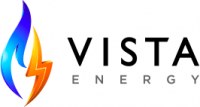Achieve an Energy-Efficient Kitchen in Four Simple Steps
You Can Manage Your Energy Usage and Still Cook a Great Meal
Besides your heating and cooling systems, your kitchen is the area of your home that uses the most energy. This seems rather obvious, since you use your kitchen all the time to cook for yourself, your family, and your friends.
So, how can you create an energy-efficient kitchen you can afford? The most common suggestion is to replace your older appliances with more energy-efficient ones. As we’ve discussed before, energy-efficient appliances are your friends, but there are other ways to increase the energy efficiency of your kitchen without a complete overhaul.
1) The Refrigerator
Your kitchen fridge is one of the biggest power users in your entire home. It’s a large appliance that’s always plugged in and always in use. There is no “standby” function that allows it to use less power at certain times of the day when people aren’t opening and closing its doors. So, outside of replacing an older machine with an ENERGY STAR model that has fresh seals around the door, here are three simple ways to be increase the energy efficiency of your refrigerator.
- Optimize the temperature settings – Keep the standard fridge part at 37-40 degrees F and the freezer at 0 to 5 degrees F.
- Use ice trays – Turn off the ice machine and use traditional freezer trays to make ice cubes.
- Clean the coils – Since dust restricts air flow and makes your fridge work harder, wipe down the cooling coils on the back of your fridge twice a year.
2) The Oven
Your oven is also a big draw on power. By cooking with more and forethought, you can use less power and continue to create delicious food.
- Don’t preheat – In most cases, you really don’t need to preheat your oven before putting food in it. You save energy by not preheating your oven for 5-10 minutes every time you want to cook something.
- Turn it off early – You can turn off your oven about 5 minutes before the instructions say the cook time is complete. There is plenty of ambient heat remaining in the oven to finish cooking your food.
- Keep it closed – Don’t open the oven door unless it’s important to the actual cooking process. If you need to see your food, just use the light.
- Use glass / ceramic dishes – Using proper vessels that both attract and retain heat more efficiently will lower your cooking time and cook your food more thoroughly, which lowers your energy use.
3) The Stovetop
Energy efficiency comes down to knowing when, how, and why to use your stove. Unless you have a newer model induction stove (which are very energy-efficient), turning on a burner literally starts heating the house and wasting energy.
- Match the pots and pans to the burner – Using the correct size vessel for the corresponding burner size helps you direct the heat to where it needs to go and cook more efficiently.
- Use lids – By not doing so, your kitchen heats up your kitchen and wastes energy. This especially applies to boiling water and heating up other liquids
- Use other appliances – Whether it’s your microwave, toaster, toaster oven, slow cooker, or similar device, they all heat food more efficiently and more quickly than your stovetop (and your oven!), AND they can be unplugged when not in use.
4) The Sink
While your sink doesn’t technically use energy on its own, it’s definitely a place where you can waste lots of water and energy to heat up that water.
- Low-flow faucets – You can install these yourself and with relative ease. They deliver less water, which lowers your energy costs when it comes to heating up hot water.
- No hand washing – Hand washing your dishes in the sink doesn’t save money or water compared to a modern ENERGY STAR dishwasher. This even includes pre-washing your average dirty dish. Let your dishwasher do the work.
- Use your dishwasher correctly – You should run this appliance only when it’s full, but never over-filled. You should also use energy-saving settings whenever possible, including turning off the function that dries the dishes inside. Instead, just open the dishwasher door when the cycle finishes and let your dishes air-dry.
Creating an energy-efficient kitchen doesn’t mean you have to take out a small loan to replace your current appliances. By heeding these tips, it is possible that the savings you earn can help you to afford replacements for your energy-inefficient appliances in the future – thus lowering your energy costs even further.
Have Questions? Call Us!
Our representatives are waiting to help you Mon - Fri 7:00 am to 6:00 pm CST
Sat 10:00 am to 3:00 pm CST
